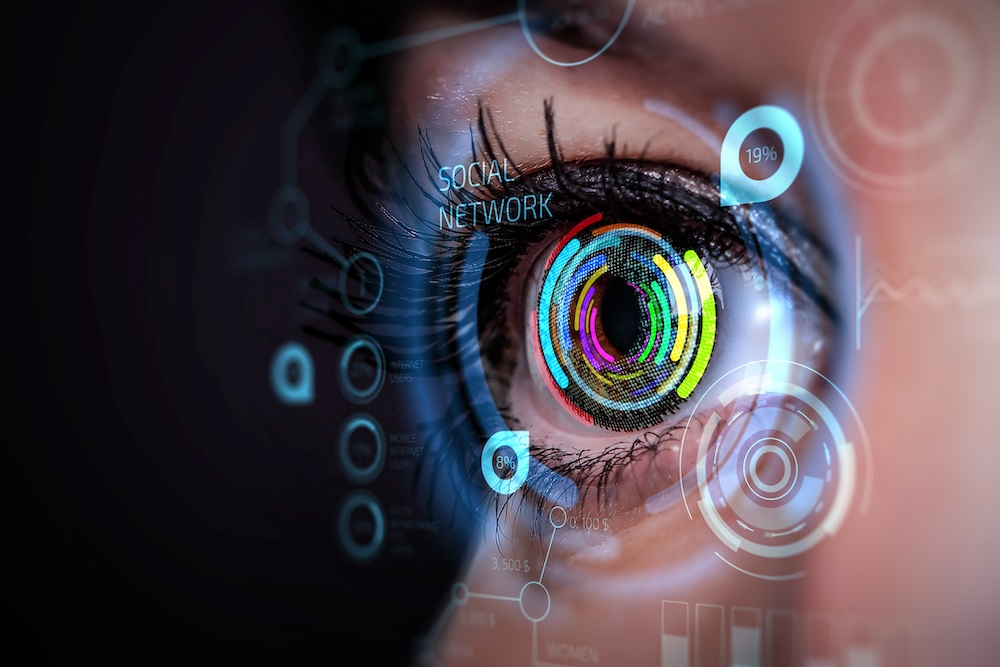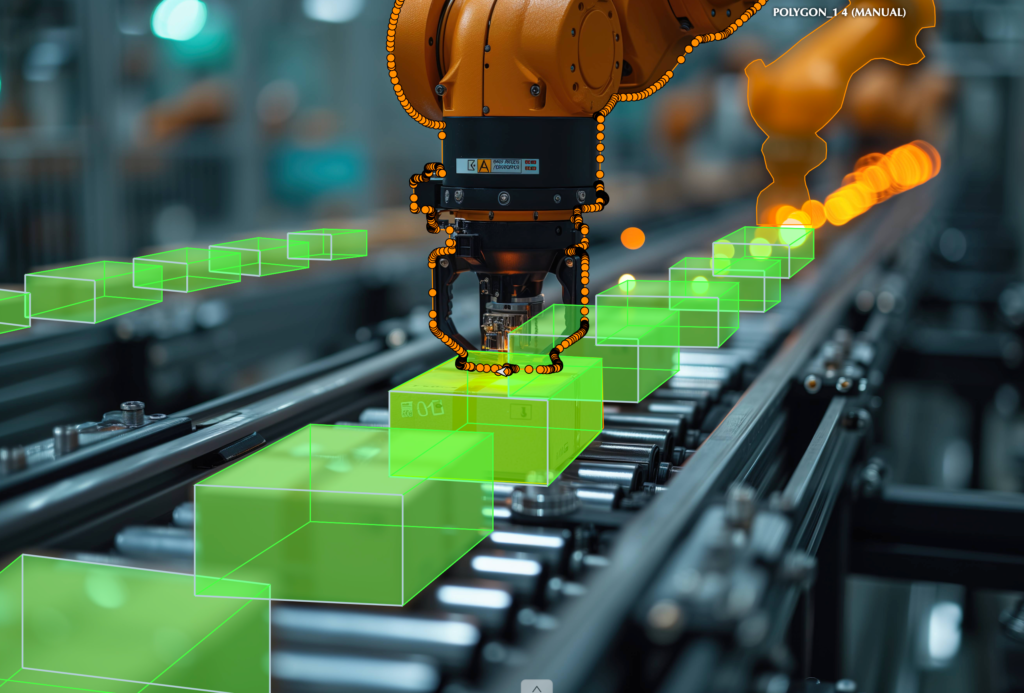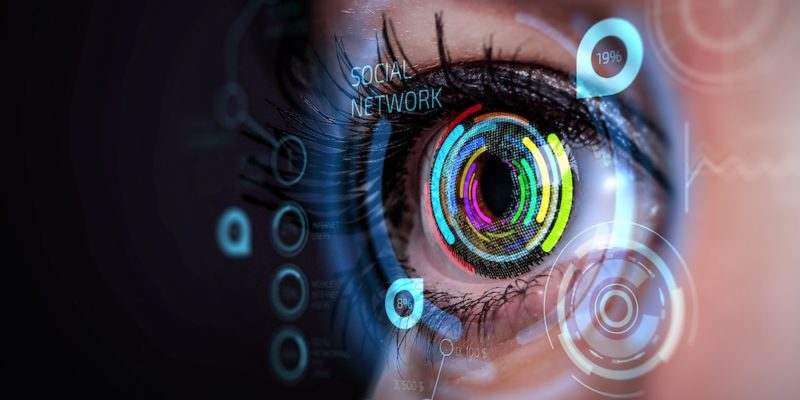Deep learning has greatly impacted the field of computer vision, enabling computers and systems to analyze and interpret the visual world with precision that rivals human perception. This transformation has prompted innovation across various industries, from autonomous vehicles to medical imaging. Let’s explore the fundamental techniques of deep learning in computer vision, touching upon its key applications, and the challenges and ethical considerations it poses.

The basics of deep learning in computer vision
Deep learning is a subset of artificial intelligence (AI) that has become a cornerstone for computer vision. Deep learning possesses the ability to interpret and understand the visual world, which paves the way for new possibilities across various industries.
What is Deep Learning?
Deep learning is an advanced variety of machine learning encompassing neural networks with multiple layers, known as deep neural networks. These networks mimick the human brain and can learn from large amounts of data. Deep learning automates the extraction of features from raw data, reducing the need for manual extraction.
How deep learning is applied in computer vision
In computer vision, deep learning performs various tasks such as recognizing patterns, classifying objects within images, and interpreting complex scenes. It does so through the following process:
- Input layer: The process starts when an image is input into the neural network, typically in pixel values.
- Convolutional layers: These layers are the building blocks of convolutional neural networks (CNNs). CNNs use filters that convolve with the image to create feature maps that summarize the presence of specific features in the input.
- Activation functions: After convolution, an activation function like ReLU (Rectified Linear Unit) is applied to introduce non-linear properties into the network, helping it to learn more complex patterns.
- Pooling layers: These layers reduce the dimensions of the data by combining the outputs of neuron clusters into a single neuron in the next layer. Pooling helps detect constant features.
- Fully connected layers: In the end, CNNs have one or more fully connected layers where every input is connected to every output by a weight. Here, deep learning models generate the final output, synthesizing the learned features to make predictions or classifications.
- Output layer: The final layer outputs the model prediction, such as identifying an object in an image.
Key techniques and models
Deep learning has fundamentally changed computer vision practices by introducing powerful and efficient models used for understanding images and videos. Here, we'll delve into some of the most influential techniques and models that turned out to be pivotal for this transformation.
Key deep learning models
Several models have defined the progress in deep learning for computer vision:
- LeNet: Developed in the 1990s by Yann LeCun, it was one of the first convolutional networks that successfully recognized handwritten digits and other objects in images.
- AlexNet: Introduced by Alex Krizhevsky in 2012, AlexNet significantly outperformed the previous algorithms in the ImageNet Large Scale Visual Recognition Challenge (ILSVRC) using deeper layers and innovative techniques like dropout for regularization.
- VGGNet: Developed by Visual Graphics Group from Oxford, VGGNet was noteworthy for its simplicity and depth. It showed that the depth of the network is a critical component for good performance.
- GoogLeNet (Inception): This model introduced a new architecture known as the "inception module" which allowed it to learn from multi-level feature representations within the same network. This was beneficial for training deeper networks.
- ResNet: Short for Residual Network, developed by Microsoft, it uses "skip connections" or "shortcut connections" to jump over some layers. ResNet demonstrated that networks could get significantly deeper without suffering from vanishing gradients—with depths of up to 152 layers.
Other techniques in deep learning for computer vision
- Transfer learning: This technique involves taking a model that has been trained on a large dataset and fine-tuning it for a specific, often smaller, dataset. This is particularly useful in computer vision, where large labeled datasets are often scarce.
- Data augmentation: To improve model robustness, training data are artificially expanded by applying random, yet realistic, transformations to the training images, such as rotating, scaling, and cropping.
- Regularization techniques: Techniques like dropout, L2 regularization, and batch normalization are used to prevent overfitting, especially in very large networks.
Applications of deep learning in computer vision
Deep learning has entered the field of computer vision, leading to groundbreaking advancements across a wide array of industries. The peculiarity of deep learning models to interpret and analyze visual data has opened up numerous possibilities for practical applications. Here are some key areas where deep learning is making a significant impact:
Autonomous vehicles
One of the most common applications of deep learning in computer vision is in the development of autonomous vehicles. Deep learning models are employed to interpret real-time visual data from cameras placed on vehicles. These models perform critical tasks such as detecting and classifying objects (like pedestrians, other vehicles, and traffic signs), scene segmentation, and managing vehicle navigation and obstacle avoidance.
Medical imaging
In healthcare, deep learning is transforming medical diagnostics by enhancing the analysis of medical images. Techniques like image segmentation and classification are used in disease detection such as cancer through X-rays, MRI scans, and CT scans. Deep learning helps point out patterns in imaging data that are subtle or too complex for human eyes, therefore providing faster and more accurate diagnoses.
Surveillance and security
Deep learning is extensively used in surveillance systems to enhance public safety and security. It enables facial recognition, anomaly detection, and behavior analysis in real-time video feeds. These capabilities are crucial for applications ranging from monitoring high-traffic public areas to enhancing security at borders and airports.
Retail and e-commerce
In retail, deep learning-powered computer vision technology is used for multiple applications such as automated checkout processes, customer movement tracking, and inventory management. Deep learning algorithms analyze video from store cameras to understand shopping behavior, manage stock levels, and optimize store layouts based on traffic flow analysis.

Agriculture
Deep learning also makes strides in agriculture, helping farmers increase efficiency and crop yields. Computer vision systems analyze images from drones or satellites to monitor crop health, detect plant diseases, predict yields, and manage resources more effectively. This technology enables precision agriculture practices that lead to more sustainable farming methods.
Manufacturing and quality control
In manufacturing, deep learning is used for automating quality control processes. Computer vision systems inspect products on assembly lines with high precision, detecting defects that are invisible to the human eye. This improves the quality of products and enhances operational efficiency by reducing manual inspection costs.

Entertainment and media
In the entertainment industry, deep learning in computer vision is used for special effects, animation, and even in enhancing user interaction with media content. For example, algorithms can automatically edit videos, generate realistic effects, or track motions for interactive gaming systems.
Robotics
Robots integrated with deep learning-based vision systems can perform complex tasks such as sorting, handling, and assembling products. The robot adapts to varying environments and learns to handle new objects through supervised learning and image-processing techniques.
Environmental monitoring
Deep learning helps in environmental conservation efforts by processing images from satellites and drones to monitor changes in ecosystems, track wildlife, and assess the impacts of climate change. This technology aids in providing detailed insights that are crucial for conservation strategies.
Challenges and ethical considerations
While deep learning in computer vision has brought remarkable advancements and efficiencies to various sectors, it also poses significant challenges and ethical considerations. These issues need careful attention to ensure that the deployment of these technologies is responsible and beneficial for society. Here are some of the major challenges and ethical dilemmas associated with deep learning in computer vision:
Data privacy and security
One of the prominent concerns is the privacy and security of the data used in training and operating deep learning models. Computer vision systems often require vast amounts of data, including potentially sensitive personal information.
Ensuring that this data is collected, stored, and used without violating privacy rights is crucial. There's also the risk of data breaches, where personal visual data could be exposed or misused.
Bias and fairness
Deep learning models can deepen biases present in the training data. In computer vision, this can manifest as racial, gender, or socioeconomic biases in facial recognition technologies or surveillance systems.
Biased models can lead to unfair treatment and discrimination, affecting decision-making in critical areas like law enforcement, hiring, and lending.
Transparency and explainability
Deep learning models, especially deep neural networks, are often described as "black boxes" because of their complex decision-making processes. The lack of explainability in these models poses challenges in deploying them. More transparency is crucial when understanding the rationale behind decisions is essential, such as in healthcare diagnostics or autonomous vehicle control.
Reliability and safety
Ensuring the reliability of deep learning systems is paramount, especially in safety-critical applications like autonomous driving and medical diagnostics. Errors or failures in vision tasks, object detection, or image recognition could have serious consequences.
Developing robust and reliable models that can handle unexpected situations or anomalies is a significant challenge.
Overreliance and de-skilling
As deep learning applications become more prevalent, there is a risk of overreliance on automated systems, potentially leading to the de-skilling of professionals.
For instance, if medical practitioners rely too heavily on automated diagnostic tools, it could diminish their diagnostic skills. Balancing the benefits of automation with the need to maintain and develop human expertise is crucial.
Environmental impact
The environmental impact of training large deep learning models is another growing concern. The energy consumption and carbon footprint associated with operating massive data centers necessary for training and deploying these models can be substantial.
Finding ways to reduce the environmental impact of these technologies is becoming increasingly important.
Ethical use and regulation
The environmental impact of training large deep learning models is another growing concern. The energy consumption and carbon footprint of operating massive data centers necessary for training and deploying these models can be substantial.
Executing ways to reduce the environmental impact of these technologies is becoming increasingly important.
Conclusion
Deep learning has irrevocably transformed the landscape of computer vision, driving significant advancements across various industries from healthcare and automotive to agriculture and security.
With technology advancements the promise of enhanced efficiency and new capabilities but also significant challenges and ethical considerations that must be carefully managed.
The capacity of deep learning models to analyze and interpret complex visual data has opened up possibilities to automate tasks that were once considered the exclusive domain of human perception. However, as we increasingly rely on these systems, the need to address concerns such as data privacy, bias in algorithms, and the environmental impact of training these models becomes more urgent.
Looking forward, the future of deep learning in computer vision is undeniably promising but requires a balanced approach. Stakeholders across all sectors—developers, policymakers, and end-users—must collaborate to ensure that these technologies are implemented responsibly.
Emphasizing transparency, fairness, and sustainability will be key to overcoming challenges and ensuring that deep learning continues to serve as a tool for positive transformation in our visual and digital landscapes.
By nurturing an ecosystem that values ethical considerations as highly as technological advancements, we can harness the full potential of deep learning to not only see the world more clearly but also to interact with it in smarter, more equitable ways.




